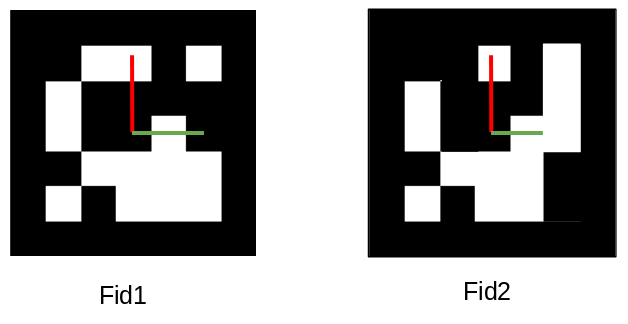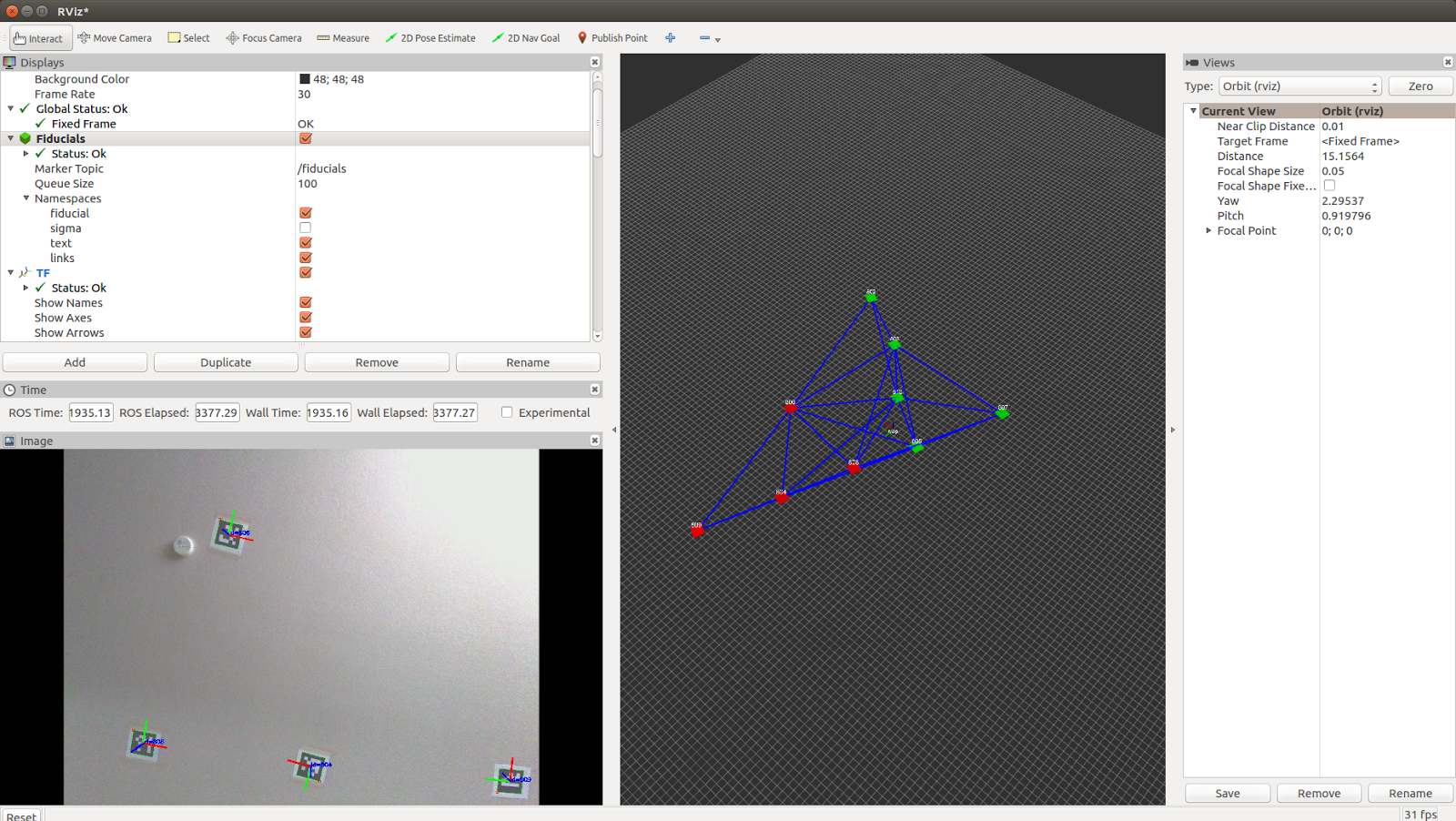Show EOL distros:
Package Summary
The fiducials package
- Maintainer status: developed
- Maintainer: Jim Vaughan <jimv AT mrjim DOT com>, Rohan Agrawal <send2arohan AT gmail DOT com>
- Author:
- License: BSD
- Source: git https://github.com/UbiquityRobotics/fiducials.git (branch: indigo-devel)
Package Summary
Localization using fiducial markers
- Maintainer status: developed
- Maintainer: Jim Vaughan <jimv AT mrjim DOT com>, Rohan Agrawal <send2arohan AT gmail DOT com>
- Author: Jim Vaughan <jimv AT mrjim DOT com>
- License: BSD
- Source: git https://github.com/UbiquityRobotics/fiducials.git (branch: kinetic-devel)
Package Summary
Localization using fiducial markers
- Maintainer status: developed
- Maintainer: Jim Vaughan <jimv AT mrjim DOT com>, Rohan Agrawal <send2arohan AT gmail DOT com>
- Author: Jim Vaughan <jimv AT mrjim DOT com>
- License: BSD
- Source: git https://github.com/UbiquityRobotics/fiducials.git (branch: kinetic-devel)
Package Summary
Localization using fiducial markers
- Maintainer status: maintained
- Maintainer: Jim Vaughan <jimv AT mrjim DOT com>, Rohan Agrawal <send2arohan AT gmail DOT com>
- Author: Jim Vaughan <jimv AT mrjim DOT com>
- License: BSD
Overview
This package provides a system that allows a robot to determine its position and orientation by looking at a number of fiducial markers (similar to QR codes) that are fixed in the environment of the robot. Initially, the position of one marker is specified, or automatically determined. After that, a map (in the form of a file of 6DOF poses) is created by observing pairs of fiducial markers and determining the translation and rotation between them.
How it works
The Ubiquity Robotics localization system uses a number of fiducial markers of known size to determine the robot's position. Detection of the markers is done by the aruco_detect node. For each marker visible in the image, a set of vertices in image coordinates is produced. Since the intrinsic parameters of the camera and the size of the fiducial are known, the pose of the fiducial relative to the camera can be estimated. Note that if the camera intrinsics are not known, they can be determined using the process described in the camera calibration tutorial.
The diagram below shows the coordinate system of a fiducial marker, which has a length of 2d. The image coordinates (x, y) of each vertex correspond to a ray from the camera. The pose estimation code solves a set of linear equations to determine the world (X, Y, Z) coordinate of each of the vertices. From this, we obtain the *transform* of the fiducial's coordinate system to the camera's coordinate system T_fid_cam. This represents the *pose* of the marker in the camera's coordinate system. Since we know the camera's pose in the coordinate system of the robot,c image. In the diagram below, two fiducials, fid1 and fid2 are shown. If fid1 is at a known pose in the world, T_map_fid1 and we know the marker to camera transforms for both markers, we can compute the pose of fid2 thus:
T_map_fid2 = T_map_fid1 * T_cam_fid2 * T_fid1_cam
In this way, the map is built up as more fiducial pairs are observed. multiple observations are combined with weighting, to produce an estimate of the 6DOF pose of each fiducial marker.

Getting Started
A camera is required, and it is necessary to know the position of the camera relative to the robot's base_link. Software for the Raspberry Pi is available at:
https://github.com/UbiquityRobotics/raspicam_node
To install the fiducial software from binary packages:
sudo apt-get install ros-kinetic-fiducials
Fiducial markers can be generated with a command like this:
rosrun aruco_detect create_markers.py 100 112 fiducials.pdf
Once printed, they can be affixed to the environment. They don't need to be placed in any particular pattern but the density should be such that two or more markers can be seen by the camera on the robot, so the map can be built. Placing them on the ceiling reduces problems with occlusion, but is not required, since a full 6DOF pose is estimated.
Two nodes should be run, aruco_detect, which handles the detection of the fiducials, and fiducial_slam, which combines the fiducial pose estimates and builds the map and makes an estimate of the robot's position. The map is in the form of a text file specifying the 6DOF pose of each of the markers, and is automatically saved.
There are launch files for both of these nodes:
roslaunch aruco_detect aruco_detect.launch roslaunch fiducial_slam fiducial_slam.launch
A launch file is also provided to visualize the map in rviz.
roslaunch fiducial_slam fiducial_rviz.launch
This will produce a display as shown below. The bottom left pane shows the current camera view. This is useful for determining if the fiducial density is sufficient. The right-hand pane shows the map of fiducials as it is being built. Red cubes represent fiducials that are currently in view of the camera. Green cubes represent fiducials that are in the map, but not currently in the view of the camera. The blue lines show connected pairs of fiducials that have been observed in the camera view at the same time. The robustness of the map is increased by having a high degree of connectivity between the fiducials. If the mapping is working, the spatial layout of the fiducials in the map will match the layout of the physical markers.
Automatic Map Initialization
If the map is empty, then it will auto-initialize when a fiducial is visible. The auto-initialization calculates the pose of the nearest fiducial in the map frame, such that base_link of the robot is at the origin of map. For best results, this should be done with the robot stationary.
Clearing the Map
The map can be cleared with the following command:
rosservice call /fiducial_slam/clear_map
After this command is issued, the map can be auto-initialized, as described above.

